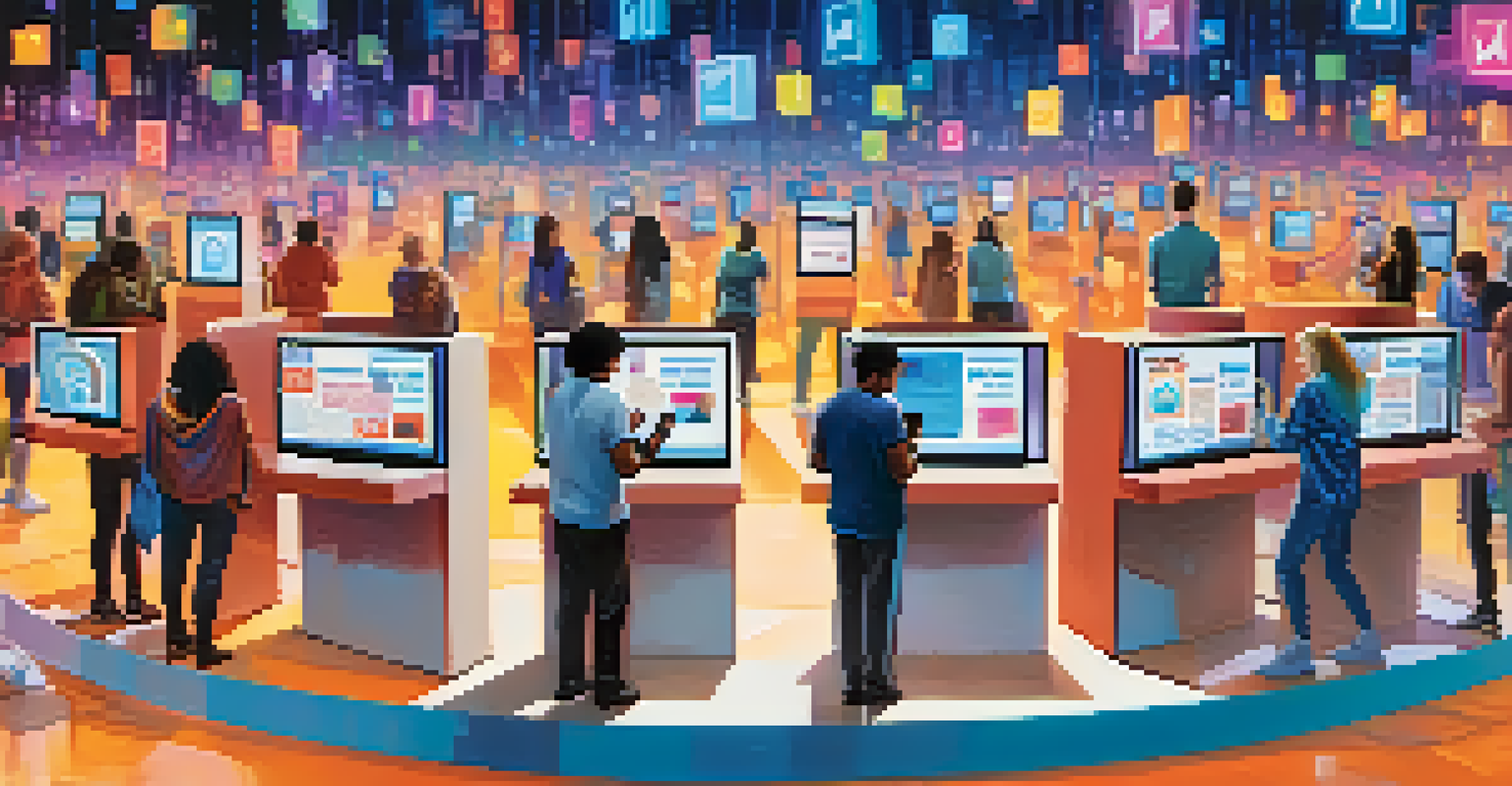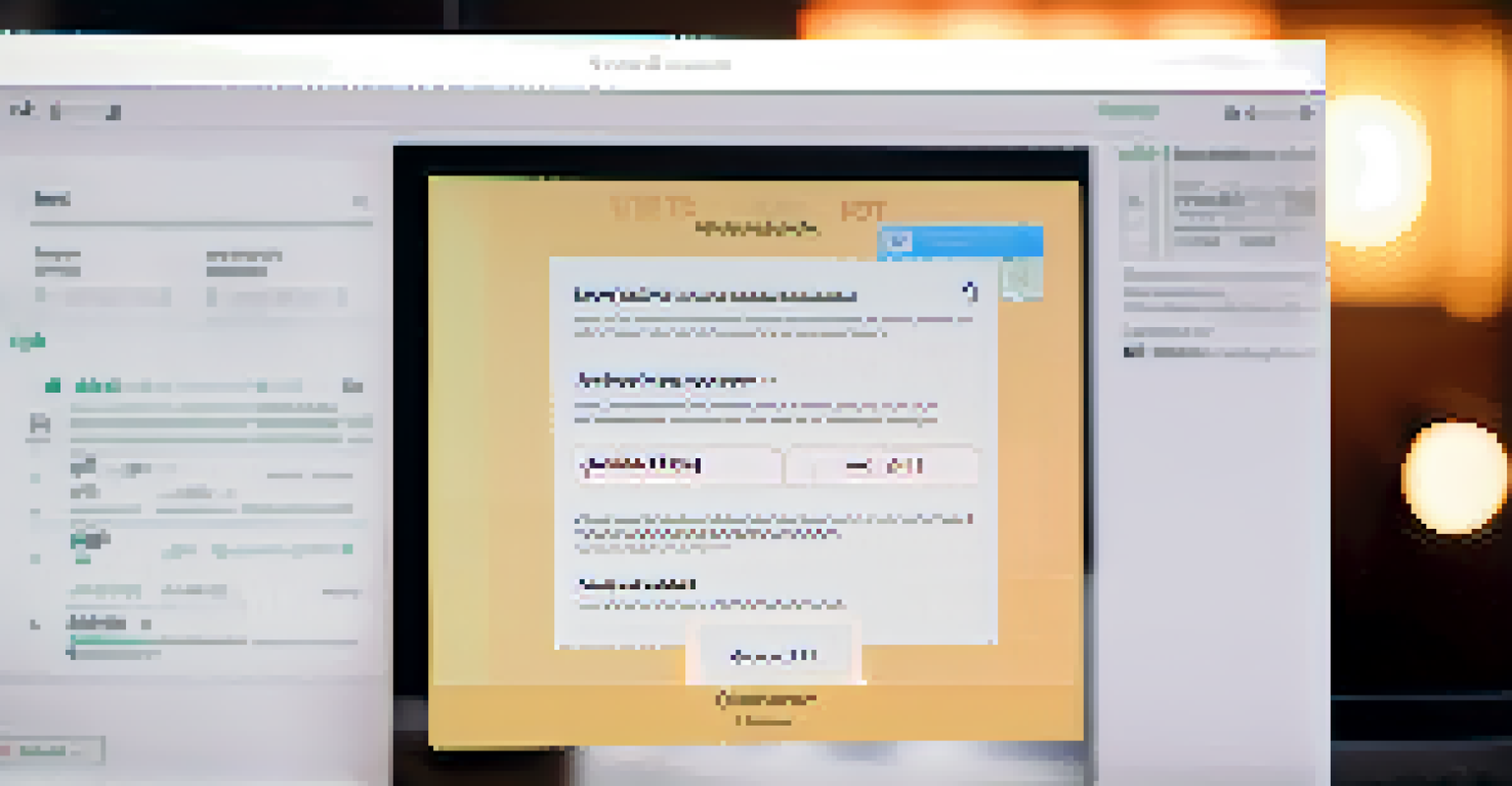Blockchain Voting: Ensuring Integrity in Electoral Processes

Understanding Blockchain: The Basics You Need to Know
Blockchain is a decentralized digital ledger that securely records transactions across multiple computers. This technology ensures that once data is recorded, it cannot be altered without the consensus of the network. Think of it like a public library where everyone can see the books, but only designated individuals can add or change the content.
Blockchain is the tech. Bitcoin is merely the first mainstream manifestation of its potential.
In the context of voting, blockchain can provide an unchangeable record of each vote cast, ensuring transparency and trust in the electoral process. This eliminates concerns about tampering or fraud, as each transaction is visible and verifiable by all participants. It's like having a transparent box where everyone can see the votes being counted as they happen.
By understanding the fundamentals of blockchain, we can appreciate its potential role in transforming how we conduct elections. This technology not only enhances security but also empowers voters by giving them confidence that their voices are heard and counted accurately.
The Importance of Integrity in Electoral Processes
Integrity in elections is crucial for democracy, as it ensures that the will of the people is accurately reflected in the results. When voters trust that their votes will count, they are more likely to participate, which strengthens the democratic process. Without this trust, voter apathy can lead to lower turnout and skewed results.

Unfortunately, many electoral systems face challenges such as ballot tampering, voter fraud, and lack of transparency. These issues can undermine public confidence and create divisions within society. By addressing these concerns, we can work towards a more inclusive and fair electoral process.
Blockchain Ensures Voting Integrity
By providing a transparent and tamper-proof method for recording votes, blockchain enhances trust in the electoral process.
Implementing blockchain for voting can significantly enhance integrity by providing a secure, transparent, and verifiable method of casting and counting votes. Imagine a voting system where every citizen can independently verify their ballot, ensuring that every vote truly counts.
How Blockchain Voting Works: A Simplified Overview
In a blockchain voting system, each vote is recorded as a transaction on the blockchain, creating a permanent and tamper-proof record. Voters can cast their votes using secure digital identities, which ensures that only eligible individuals can participate. This is similar to having a unique key that grants you access to a secure room where your vote can be safely cast.
The future of voting is digital, and blockchain technology can help rebuild trust in the electoral process.
Once cast, votes are encrypted and added to the blockchain, making it nearly impossible to alter or delete them. This process not only secures the votes but also maintains the anonymity of voters, addressing concerns about privacy. It's like having a voting booth where no one can see your choice, yet every vote is counted.
After the voting period ends, the results can be quickly and accurately tallied, providing instant feedback on the election outcome. This efficiency contrasts sharply with traditional methods, where counting ballots can take days or even weeks, leading to uncertainty and speculation.
Addressing Concerns: Security and Privacy in Blockchain Voting
While blockchain offers numerous advantages, concerns about security and privacy still exist. Many people worry about the potential for hacking or data breaches, which could compromise the integrity of the voting process. However, blockchain's decentralized nature means that it is much harder to attack compared to traditional centralized systems.
Moreover, blockchain technology employs advanced cryptographic techniques to protect the identities and votes of participants. Voters can be assured that their choices remain confidential, as only the final tally is made public. Think of it as casting your vote in a locked box that only you can access until the official results are announced.
Security Concerns in Blockchain Voting
While blockchain improves security, concerns about hacking and privacy must be addressed to build confidence in the system.
By addressing these concerns head-on and continuously improving security measures, blockchain voting can become a trusted method for conducting elections. As technology evolves, so too will the tools we use to ensure fair and transparent processes.
Real-World Examples of Blockchain in Voting Systems
Several countries and organizations have started experimenting with blockchain technology to enhance their voting systems. For instance, in 2020, Utah County in the United States allowed overseas voters to cast their ballots using a blockchain-based application. This initiative aimed to make voting more accessible while ensuring the integrity of the election process.
Similarly, Estonia has implemented blockchain technology in various aspects of its government, including electoral processes. This small European country has been a pioneer in digital democracy, allowing citizens to vote online securely while maintaining transparency and trust. It’s like having a digital passport that not only proves your identity but also secures your vote.
These examples demonstrate that blockchain voting is not just a theoretical concept; it’s being put into practice. As more jurisdictions explore this technology, we can learn valuable lessons on its implementation and efficacy in real-world scenarios.
Challenges to Adoption: Overcoming Barriers to Blockchain Voting
Despite its potential, the widespread adoption of blockchain voting faces several challenges. One major hurdle is the need for robust technological infrastructure, particularly in regions with limited access to the internet or modern devices. For blockchain voting to be effective, it must be accessible to all voters, regardless of their technological capabilities.
Additionally, there is often resistance to change within established electoral systems. Many stakeholders, including election officials and political parties, may be hesitant to embrace new technologies due to fear of the unknown or potential disruptions. It’s akin to changing the way we drive; some people prefer the familiarity of traditional roads to the uncertainty of a new route.
Real-World Blockchain Voting Examples
Countries like Estonia and initiatives in the U.S. demonstrate the practical implementation of blockchain technology in enhancing voting systems.
To overcome these barriers, education and outreach are essential. By clearly communicating the benefits and addressing misconceptions about blockchain voting, we can build consensus and foster acceptance among all stakeholders involved in the electoral process.
The Future of Blockchain Voting: A Path Forward
As we look ahead, the future of blockchain voting appears promising. With advancements in technology and a growing emphasis on transparency, more jurisdictions are likely to explore this innovative approach to elections. Imagine a world where voting is not only secure but also efficient and accessible to everyone, ensuring that every voice is heard.
The key to successful implementation will be collaboration among governments, technology providers, and citizens. By working together, we can create a voting system that meets the needs of all stakeholders while prioritizing integrity and trust. It’s like assembling a puzzle; each piece must fit together perfectly to reveal the complete picture.

Ultimately, blockchain voting has the potential to revolutionize electoral processes and restore faith in democracy. As we embrace this technology, we can pave the way for a brighter, more inclusive future for all voters.